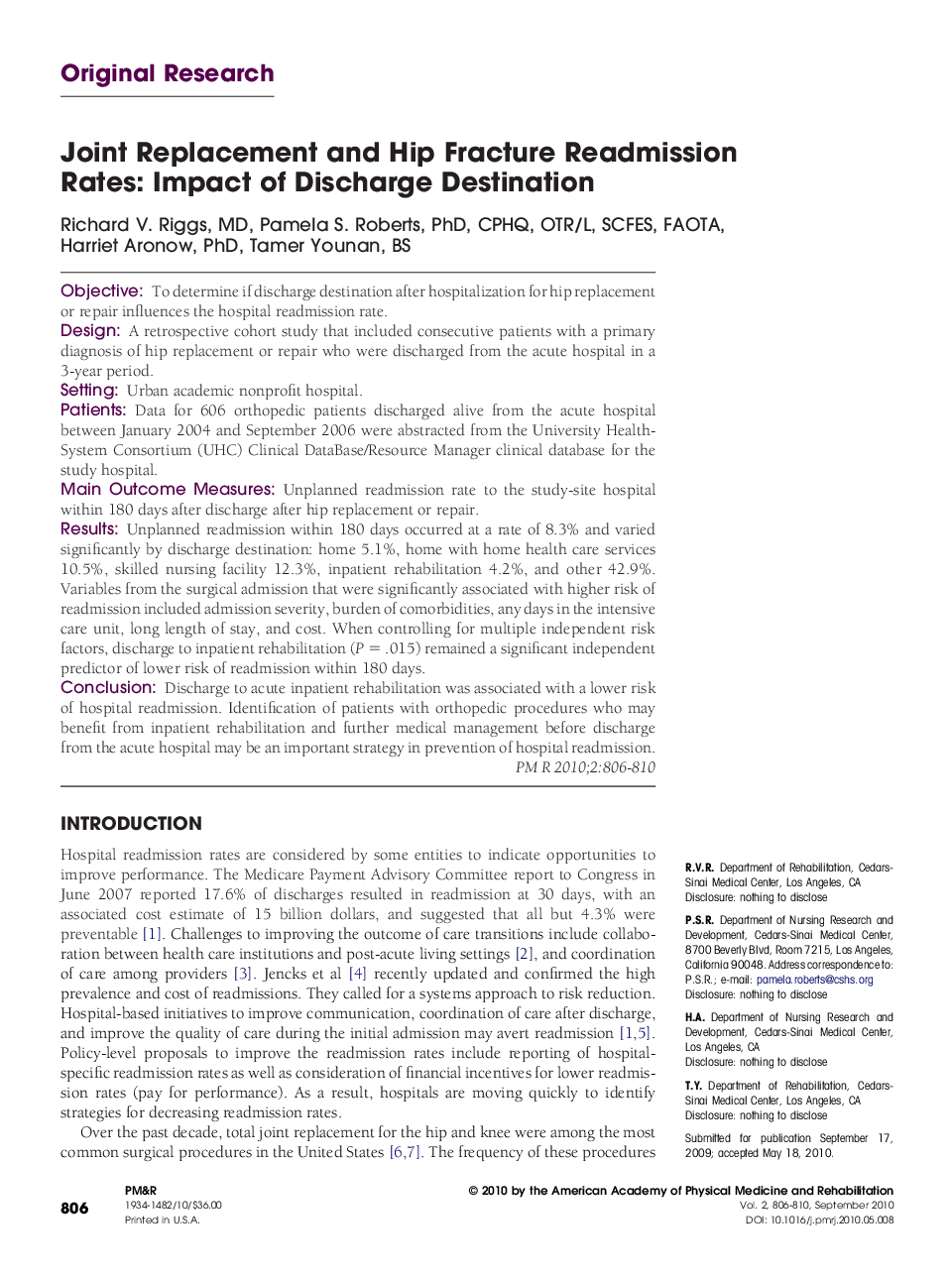| Article ID | Journal | Published Year | Pages | File Type |
|---|---|---|---|---|
| 2707984 | PM&R | 2010 | 5 Pages |
ObjectiveTo determine if discharge destination after hospitalization for hip replacement or repair influences the hospital readmission rate.DesignA retrospective cohort study that included consecutive patients with a primary diagnosis of hip replacement or repair who were discharged from the acute hospital in a 3-year period.SettingUrban academic nonprofit hospital.PatientsData for 606 orthopedic patients discharged alive from the acute hospital between January 2004 and September 2006 were abstracted from the University HealthSystem Consortium (UHC) Clinical DataBase/Resource Manager clinical database for the study hospital.Main Outcome MeasuresUnplanned readmission rate to the study-site hospital within 180 days after discharge after hip replacement or repair.ResultsUnplanned readmission within 180 days occurred at a rate of 8.3% and varied significantly by discharge destination: home 5.1%, home with home health care services 10.5%, skilled nursing facility 12.3%, inpatient rehabilitation 4.2%, and other 42.9%. Variables from the surgical admission that were significantly associated with higher risk of readmission included admission severity, burden of comorbidities, any days in the intensive care unit, long length of stay, and cost. When controlling for multiple independent risk factors, discharge to inpatient rehabilitation (P = .015) remained a significant independent predictor of lower risk of readmission within 180 days.ConclusionDischarge to acute inpatient rehabilitation was associated with a lower risk of hospital readmission. Identification of patients with orthopedic procedures who may benefit from inpatient rehabilitation and further medical management before discharge from the acute hospital may be an important strategy in prevention of hospital readmission.
